There’s a tendency to think that established plumbing systems never change and once you’ve mastered best practices for installation, there isn’t much new to learn. But before we get to those, let’s review some of those basic practices that can help ensure the success of an installation using CPVC pipes and fittings. Installing CPVC Other Read more
Industry Blogs

There’s a tendency to think that established plumbing systems never change and once you’ve mastered best practices for installation, there isn’t much new to learn.
But before we get to those, let’s review some of those basic practices that can help ensure the success of an installation using CPVC pipes and fittings.
Installing CPVC
Other practices to keep in mind include accounting for expansion and contraction. To ensure proper space for expansion due to temperature changes, plan for about 1 inch per 50 feet of straight length of pipe per 50° F temperature increase. This is primarily a consideration for hot water lines but should be applied to cold water lines when they are installed in unusually hot or cold conditions. In most cases, expansion can be accommodated with normal changes of direction, although for long straight runs, loops or offsets are required. In order to properly account for expansion and contraction, CPVC pipes should be allowed to freely move in the direction of expansion.
For more on installing CPVC, you can access step-by-step, installation instructions or download a quick reference installation guide. Now, let’s get to the new developments that have occurred with CPVC plumbing systems this year.
Support for Mini-Manifold Designs
Mini-manifold systems can simplify plumbing installation in multi-family homes and, when properly designed, improve water and energy efficiency. Until recently, these systems were only available for PEX or copper plumbing, both of which have significant limitations that can offset the benefits of mini-manifold systems.
The new FlowGuard MultiPort CPVC manifold can reduce the pressure drop similarly seen in PEX manifolds by more than half. When using manifolds, it’s important to remember that the efficiency benefits are only realized when branch lines are kept short. There is a tendency, particularly when using flexible PEX piping, to run long branches that neutralize the benefits of the manifold and increase material costs. The FlowGuard MultiPort CPVC manifold encourages smart system design keeping branch lines short, ensuring the potential benefits of this design are fully realized.
The FlowGuard MultiPort CPVC manifold also expands the potential applications of this design by enabling their use in areas where local water conditions are too aggressive or corrosive for PEX or copper piping. In addition to the pressure and temperature conditions that can reduce PEX’s ability to resist chlorine degradation, local water conditions can have a similar effect if the oxidative reduction potential of the water flowing through the pipes is above 825 mV. With more municipalities switching from chlorine to chlorine dioxide and increasing the concentration of both disinfectants in their water supply, this condition is becoming more common.
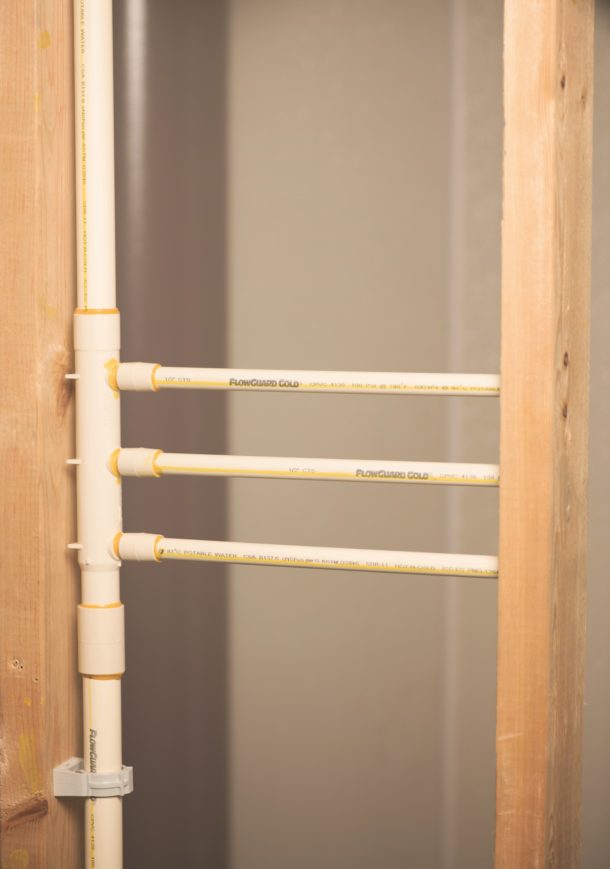 With new environmental codes and standards encouraging reduced water volume between the hot water source and fixtures, the FlowGuard MultiPort CPVC manifold system creates the opportunity to minimize the entrained water in the system and maximize points earned under the LEED and NGBS rating systems.
With new environmental codes and standards encouraging reduced water volume between the hot water source and fixtures, the FlowGuard MultiPort CPVC manifold system creates the opportunity to minimize the entrained water in the system and maximize points earned under the LEED and NGBS rating systems.
High-Contrast Solvent Cement Gains 2024 Code Approvals
For the last 30 years, the plumbing code has required one-step CPVC cements to be yellow in color. The yellow color of the cement can make it harder to see the cement against the tan CPVC pipe when performing quality control checks, particularly when the pipes are in poorly lit spaces where the background is similarly colored wood stud or subfloor.
Recognizing that this lack of contrast can make inspection more challenging, the Lubrizol FlowGuard Gold team is working with model code organizations on advancing updates to their codes that allow green one-step solvent cement to be used with CPVC. The changes enabling use of high-contrast cement have been finalized and accepted by ICC, including the IPC, IMC and IRC. They are currently unopposed at IAPMO, in the UPC and UMC.
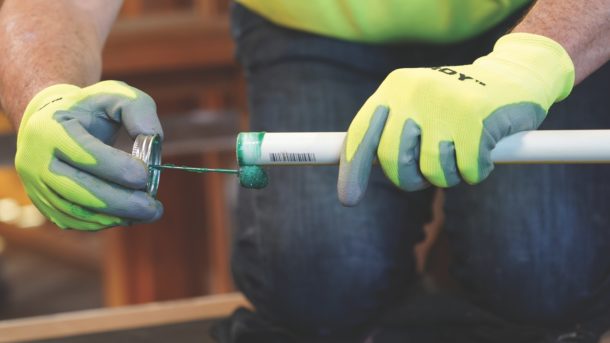
The only difference between the high-contrast green cement and the standard yellow solvent cement that has historically been used is the color. The new cement follows the same installation instructions and provides the same bonding strength as yellow solvent cement.
Continuing to Evolve
For plumbing systems like FlowGuard Gold CPVC that have proven their reliability in U.S. water systems for decades there isn’t a need for changes in material composition or system design. But there are opportunities to continue to evolve these systems to stay current with plumbing trends and resolve minor issues. To stay current on new FlowGuard Gold CPVC products and best practices, you can sign up to receive updates here.
Article submission by Jonathan Simon
Jonathan Simon is the North American residential plumbing manager for Lubrizol Advanced Materials Inc., the parent company for FlowGuard Gold Pipe and Fittings. For 60 years, FlowGuard Gold Pipe and Fittings has provided reliable hot and cold water plumbing systems to residential and commercial buildings.

Misconception #1 – You should always wear rubber gloves when operating a snake style drain cleaning machine to protect yourself from the health risks of sewage. While it is true that plumbers and drain cleaners should always be aware that they and their equipment are potentially in contact with human waste and take appropriate actions Read more
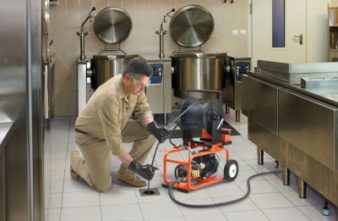 Misconception #1 – You should always wear rubber gloves when operating a snake style drain cleaning machine to protect yourself from the health risks of sewage. While it is true that plumbers and drain cleaners should always be aware that they and their equipment are potentially in contact with human waste and take appropriate actions, operating a cable style drain cleaning machine wearing only rubber gloves is not one of them. The problem with rubber gloves is that they can become pinched and caught in the rotating coils of a drain cleaning cable, causing great harm to the operator. We always recommend that operators wear heavy-duty two-ply leather gloves or something similar whenever their hands are anywhere near a drain cleaning machine. Thick leather gloves will not get caught between the coils of a snake or cable and can protect your hands from unexpected kinks or loops that sometimes form in the blink of an eye. If you want to wear rubber gloves to take appropriate sanitary precautions against sewage, then wear them under the leather gloves. This strategy gives you two levels of protection!
Misconception #1 – You should always wear rubber gloves when operating a snake style drain cleaning machine to protect yourself from the health risks of sewage. While it is true that plumbers and drain cleaners should always be aware that they and their equipment are potentially in contact with human waste and take appropriate actions, operating a cable style drain cleaning machine wearing only rubber gloves is not one of them. The problem with rubber gloves is that they can become pinched and caught in the rotating coils of a drain cleaning cable, causing great harm to the operator. We always recommend that operators wear heavy-duty two-ply leather gloves or something similar whenever their hands are anywhere near a drain cleaning machine. Thick leather gloves will not get caught between the coils of a snake or cable and can protect your hands from unexpected kinks or loops that sometimes form in the blink of an eye. If you want to wear rubber gloves to take appropriate sanitary precautions against sewage, then wear them under the leather gloves. This strategy gives you two levels of protection!
Misconception #2 — You should put a drain cleaning machine in reverse when retracting cable using a power feed device. Most modern drum style cable drain cleaning machines have a power feed and guide tube. This equipment makes it much easier to feed and retract the cable and serves to protect the operator. Every floor model brand of drain cleaning machine has a power cable feed that allows the operator to easily switch from forward to neutral to reverse while the drum and cable continues to spin in the forward direction. This feature is essential for smooth and effective operation of the machine. If the operator puts the electric motor in reverse and spins the drum and cable in the opposite direction, bad things tend to happen! Most drain cleaning companies coil their drum style cable in a ‘left hand wound’ direction. These cables are simply long, thin springs. Sometimes, like General’s Flexicore Cables, they have a solid inner core, and sometimes they don’t. However, all of them have a ‘direction’ to the outer coil that affects their performance and capabilities when under torque or in motion, and the drums, distributor tubes and power feeds that house and feed these cables are engineered with these capabilities in mind. When you reverse the motor while retracting the cable, you drastically increase the likelihood of kinking, tangling, or weakening the cable. The only time an operator should put the motor and drum of a machine in reverse is when they get a cutter wrapped up in an obstruction, and even then the duration should only be for a few seconds. Save yourself future complications and keep the machine in forward when the power feed is in reverse!
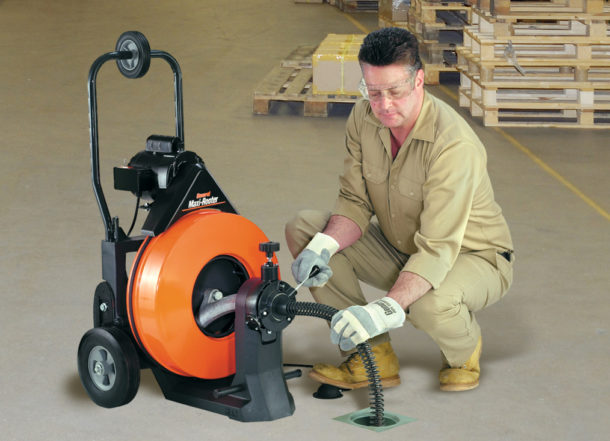
Misconception #3 – Hot water is better than cold water in cleaning drains with a high-pressure water jetter. While it is true that hot water can dissolve grease faster than cold water, the effect at high pressure is marginal. Generally speaking, in real world situations, it is not worth the additional cost and effort. Adding hot water pumps and heating tanks to your jetter protocol makes for a more expensive unit as well as doubling your work at the jobsite. High pressure cold water can do the job almost as fast, without the additional expense and time expenditure. For that reason, in a world where time is money, cold water is the way to go!
Misconception #4– High pressure water drain cleaning jetters with 4000 psi perform better than jetters with 3000 psi. In the past several years, we have seen more and more drain cleaning jetters with 4000 psi come on to the market, claiming that they have more power and effectiveness. However, according to our research, these claims are unfounded. When cleaning a drain, both pressure and flow rate are important factors. The psi, or pounds per square inch is necessary to dislodge foreign material in the pipe like grease and sludge. The jetting process is analogous to spray washing, and a certain amount of pressure, or psi is necessary to scour the inside of the pipe. However, after about 2,500 psi, further increases in pressure fail to deliver significant improvements in cleaning action. From that point on, the gallons per minute flow rate, or gpm grows in importance. For example, increasing a jetter’s flow rate from 4 gpm to 5.5 gpm almost doubles the machine’s drain cleaning speed, regardless of whether the psi is 3000 or 4000. So, look closely at the flow rate of high pressure water jetters before you buy, and don’t be fooled by marketing programs masquerading as science!
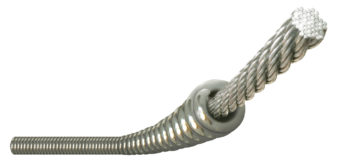 Misconception #5 — One of the biggest misconceptions that we hear from first-time General Pipe Cleaners customers is misjudging the ‘initial feel’ of our Flexicore Cable. If the customer is used to another brand of drain cleaner and then purchases a General machine or cable for the first time, they often complain to us that they received a defective cable. To them, compared to the cables that they are used to, it feels limp, weak and not stiff enough to fight its way through tough obstructions down the drain. Although their fears are unfounded, Flexicore does have a looser feel from other cables on the market because of the way it is engineered. However, we reassure our new customers is that the Flexicore will stiffen and strengthen when under torque, giving them clog busting power exactly when they need it the most. According to one customer, “it goes from a noodle to a steel rod in the blink of an eye when you hit the obstruction!” When it comes to General’s patented Flexicore Cable, first impressions can be misleading!
Misconception #5 — One of the biggest misconceptions that we hear from first-time General Pipe Cleaners customers is misjudging the ‘initial feel’ of our Flexicore Cable. If the customer is used to another brand of drain cleaner and then purchases a General machine or cable for the first time, they often complain to us that they received a defective cable. To them, compared to the cables that they are used to, it feels limp, weak and not stiff enough to fight its way through tough obstructions down the drain. Although their fears are unfounded, Flexicore does have a looser feel from other cables on the market because of the way it is engineered. However, we reassure our new customers is that the Flexicore will stiffen and strengthen when under torque, giving them clog busting power exactly when they need it the most. According to one customer, “it goes from a noodle to a steel rod in the blink of an eye when you hit the obstruction!” When it comes to General’s patented Flexicore Cable, first impressions can be misleading!
 David Dunbar is the National Sales Manager for General Pipe Cleaners, a leader in the drain cleaning/pipe inspection industry. He has been with General since 1996, starting as Customer Service Manager, then Assistant Sales Manager, and National Sales Manager since 2017. He earned a BS degree in Psychology from the University of Pittsburgh and has graduate credits in Human Resource Development and Organizational Theory. David enjoys using his extensive public speaking, video, and writing experience within the industry. He can be contacted at daved@generalpipecleaners.com
David Dunbar is the National Sales Manager for General Pipe Cleaners, a leader in the drain cleaning/pipe inspection industry. He has been with General since 1996, starting as Customer Service Manager, then Assistant Sales Manager, and National Sales Manager since 2017. He earned a BS degree in Psychology from the University of Pittsburgh and has graduate credits in Human Resource Development and Organizational Theory. David enjoys using his extensive public speaking, video, and writing experience within the industry. He can be contacted at daved@generalpipecleaners.com

Your plumbing business depends on having enough customers throughout the year. Of course, that means any info related to securing new customers is very valuable. The good news is you can find some effective and practical suggestions on precisely this topic, below. Read on to find out the best ways to get more plumbing clients. Read more
Your plumbing business depends on having enough customers throughout the year. Of course, that means any info related to securing new customers is very valuable. The good news is you can find some effective and practical suggestions on precisely this topic, below. Read on to find out the best ways to get more plumbing clients.
Establish your expertise
When it comes to important tasks like plumbing, customers want to know that they and their properties are in the safest hands possible. That is where using blogging, vlogging, and even podcasting to establish your credibility comes in.
Indeed, by offering expert in-depth content on the subject of plumbing you can easily demonstrate to potential customers that you are the one to come to when they have a problem.
Of course, your content needs to not just be in-depth and expert, but as interesting as possible too. The best way to achieve this is to create content around the areas that you are most interested in and know best.
Use your Google My Business listing
Google runs a scheme for businesses where they can claim their account and so add extra details to any listing they appear in. It’s known as Google My Business and is well worth your time as a plumber.
Indeed, not only will you be more likely to come up in local and map searches but the first three listings in an area will show a snapshot of additional information including reviews, contact info, and your opening hours. All for free.
Of course, this additional info is so important because by informing potential customers of these things it helps them to decide on whether to use your services faster.
Additionally because Google My Business offers an objective review service you can help to build up trust and authority by activating your account. After all, if a potential client Googles you and the first thing they come across are your positive Google reviews they will feel much more secure in deciding to contact you about the work they need doing.
Tap a new market
Another way that you can increase the number of plumbing clients you have is to tap a new market. For example, if you work primarily with residential clients you may want to market your plumbing business to other businesses as well.
Of course, to be successful at this you will need to make use of some great B2B SEO and marketing services. After all, making sure you get found by clients and that they are aware of the services and benefits you can offer them is vital to the success of tapping a new market.
The good news is that by working with B2B SEO experts you can come up with tactics that will help you secure larger, and more profitable corporate and business clients to enhance your business.
Make good use of your Facebook page
It’s not just Google that can help direct leads to your plumbing business, but social media platforms as well. In particular, Facebook is an excellent choice, primarily because of the combination of billions of users, and a preferential demographic for those of the right age and social status to own their own homes and businesses, and so will require plumbing services.
You can make your social media marketing even more targeted too by using Facebook Ads where you can aim for a specific location in which to offer your services.
Use previous customers to refer new ones
Previous happy customers can be your greatest ally when it comes to finding more plumbing clients. This is because a word of mouth referral means more to most people than all the online reviews, and clever marketing schemes combined, especially if it’s from someone they are close to and trust.
So, just how do you get previous customers to advocate for your business? Well, first of all, you must provide a service that is worth recommending. This means you will need to go above and beyond when it comes to the customer service you offer, making sure your clients aren’t only happy, but delighted with their experience with your firm.
Fortunately, it’s quite a bit easier to go above and beyond the call of duty as a plumber these days than it used to be. This is because technological advancements mean you can run an automated booking system where clients are notified of your estimated time of arrival and can even reschedule if it’s not convenient.
Similarly, you can communicate with them through email or instant chat at the initial and later stages of the process. You can even send them email invoices that allow them to pay online to make things as fast and as smooth as possible.

By Jeff Atwell, Nexstar Network NexTech Academy Coach Wait, what did he just say? I was sitting in on a management meeting at a business owner’s invitation. The information he’d been sharing with his team had, up until that moment, seemed straightforward – you know, staffing for the day, inbound calls, calls Read more
By Jeff Atwell, Nexstar Network NexTech Academy Coach

Wait, what did he just say?
I was sitting in on a management meeting at a business owner’s invitation. The information he’d been sharing with his team had, up until that moment, seemed straightforward – you know, staffing for the day, inbound calls, calls converted to demand service appointments, the usual. Then the owner tossed out a metric I’ve never heard before: lost calls for the day.
Lost calls for the day? He had my attention.
I had so many questions. Were those today’s numbers? How could there be a metric for today when the day wasn’t over yet? What was considered an acceptable loss in this category? How could the lost calls be such a large percentage, based on the booked calls? How many calls did the techs run on an average day?
The owner explained that eight of the 40 demand calls (20%) on the board were being written off for the day, with no hope of getting a technician to the call. Naturally, an attempt would be made to reschedule those calls, but the odds of a recovered and rescheduled appointment were poor.

I couldn’t wrap my head around this. How could 20% of the calls on the board just be written off, as if that was normal? I needed more information.
The owner told me it wasn’t uncommon in his business to have callbacks, warranty calls, and jobs that went over on their allotted time; these jobs all became a scheduling priority the following day. This created a domino effect that had become the status quo. The practice was so accepted that lost calls were an everyday metric to track in the managers’ meeting!
This was a vicious cyle that had grown into a problem affecting nearly 20% of this owner’s daily business. And it was all completely avoidable.
Callbacks or warranty calls (technician warranties) are the most frequent and expensive kinds of calls for any home service company. They have a profound impact on revenue and profitability. The direct cost of returning to a customer’s home is nothing compared to the lost opportunities and subsequent income of the calls you lose because you’re scheduling callbacks. Furthermore, as if they weren’t expensive enough, those lost opportunities cost a small fortune in advertising dollars spent to get them in the first place.
If this is happening with your business, it’s time to take control.
Callbacks or warranty call are usually caused by one of the three “P’s”– people, processes, or products. So what’s the solution?
Training! Yes, training. You can reduce callbacks and increase your revenue by providing your team with on-the-job technical training. Here’s how you start:
-
Perform a historical review
In the past 6-12 months, what kinds of warranty calls or callbacks have you received? Thinking in terms of people, processes, and products, what do many of those calls have in common? Make a list of traits or topics some of your callbacks might share (e.g. warranty calls, time management issues, etc.) Once you have a list, prioritize those traits or topics by impact, meaning that if you were to put forth a training effort on a few of those topics, which ones would have the most significant impact on your business? Congratulations: you’ve just developed your first training plan.
-
Determine your approach to training the topic
What are the main things you want your employees to understand, fix, or learn? What will your team members be able to do after training that they couldn’t do before?
Once you determine the ‘what,’ you can focus on the ‘how.’ There’s no need to go it alone! Lean on your senior staff or senior technicians – the people who regularly deal with the issue you’re going to be training on. There is a particular brilliance in collaboration.
Don’t forget to use outside resources, too. Many manufacturers offer training on their products. In some cases, the local representative can come to you and help with your training efforts.
-
Develop your plan to teach the first topic
Schedule the training and don’t postpone or reschedule it. Training that never takes place doesn’t help your customers or your bottom line.
-
Keep your eye on the ball
It’s vital to monitor everyone’s progress after training to see the effects of your training initiatives. Using key performance indicators (KPIs) is generally the easiest way to see those effects. What KPIs do you track? Calls run, conversions, average ticket totals, closing rates, turn-overs, warranty calls? Whatever you track, successful training will move those KPIs in favorable directions. Paying attention to these numbers will also help you get ahead of unfavorable trends. The numbers matter. Keeping tabs on warranty calls and callbacks also provides a wealth of information and helps to highlight your team’s training needs.
Technical training may seem intimidating at first glance, but you can do it! Identifying training topics and hashing out the key takeaways will help develop technical training that will expand technician skills and the overall abilities of your team. Training will also help you move closer to eliminating those pesky warranty calls and callbacks that fill the calendar and empty your business’s coffers.
 Jeff Atwell started in the plumbing trade the first business day after his high school graduation. He has more than 30 years of experience with residential and commercial service, as well as with residential new construction, and discovered a passion for teaching as an instructor at his local apprenticeship school. Jeff was the first technical coach hired to work on Nexstar Network’s NexTech Academy program. Since then, he has been working to create the best program focused on residential plumbing service. He can be reached at jeffa@nexstarnetwork.com.
Jeff Atwell started in the plumbing trade the first business day after his high school graduation. He has more than 30 years of experience with residential and commercial service, as well as with residential new construction, and discovered a passion for teaching as an instructor at his local apprenticeship school. Jeff was the first technical coach hired to work on Nexstar Network’s NexTech Academy program. Since then, he has been working to create the best program focused on residential plumbing service. He can be reached at jeffa@nexstarnetwork.com.

If you’re not creating a continuity plan then it may be best to begin formulating an exit plan for your plumbing business. Even if you’re not ready to permanently park your service van, it’s always handy to create a plan on how you plan to exit your business. This could include ending it all Read more
If you’re not creating a continuity plan then it may be best to begin formulating an exit plan for your plumbing business. Even if you’re not ready to permanently park your service van, it’s always handy to create a plan on how you plan to exit your business. This could include ending it all together but even taking the steps to look into selling it if your plumbing success has created a successful brand within the community.
You’ve worked so hard to build the plumbing business so why not try to profit when it’s time to make the exit? As uncomfortable as the idea is, it can be very helpful to just let it go and sell it to someone else. These tips will tell you how to do just that.
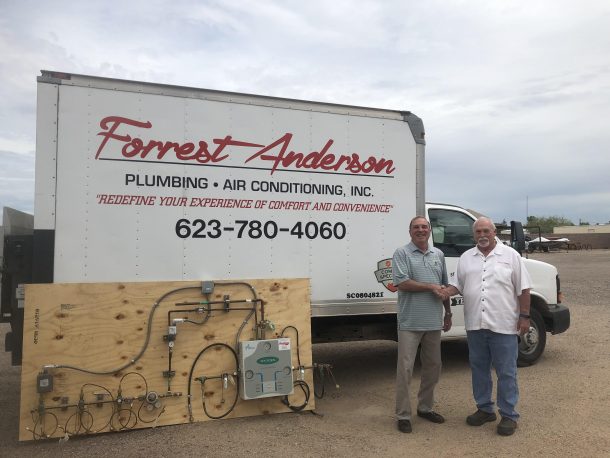
What Is The Process Of Selling My Plumbing Company
The process of selling a company is long and complicated. It can take up to a year or but you can expect it to take even more. Whether or not you’re selling a business that is not profitable, the whole process itself will be stressful. The first step is to find a buyer, which is almost always difficult to do. You will need to find a company or an individual that has the same values as yours and has the right size for your company. Sometimes companies who buy businesses will still want to keep the branding since it’s familiar. So you shouldn’t want to feel the need to sell to just anybody.
Don’t Forget About the Legality
Once you find someone or a company that would be suitable for selling your business to, you’ll then need to come to the next step which is the whole legality of selling your business. Then you have to go through the legal process of transferring ownership of your company to the new owner.
In order for this process to go smoothly, you will need an experienced business broker who understands how this process works and can help you with all of the steps in between. But sometimes a lawyer will have to step in as well to ensure the entire process is smooth. This could include each party having their own lawyer or the party that is making the purchase will hire one.
How to Create a Solid Exit Plan
A solid exit plan is a necessary part of any business. It ensures that the business and its employees are prepared for what could happen if the company is sold or closed down. Even if you’re going to sell your company to someone one or another company, there still needs to be an exit plan for your plumbing business.
This exit plan will need to be updated as more information is revealed about the state of the company such as when there will be a rebranding (if there is going to be), plus when the services of your plumbing business will be terminated. . When creating an exit plan, there are a number of things to consider, including:
- The type of exit you want to have
- The financial situation
- The time frame
- Who will be responsible for what tasks
While the idea of having an exit plan sounds straightforward, it can be a tad difficult as you don’t want to skip over anything necessary.
